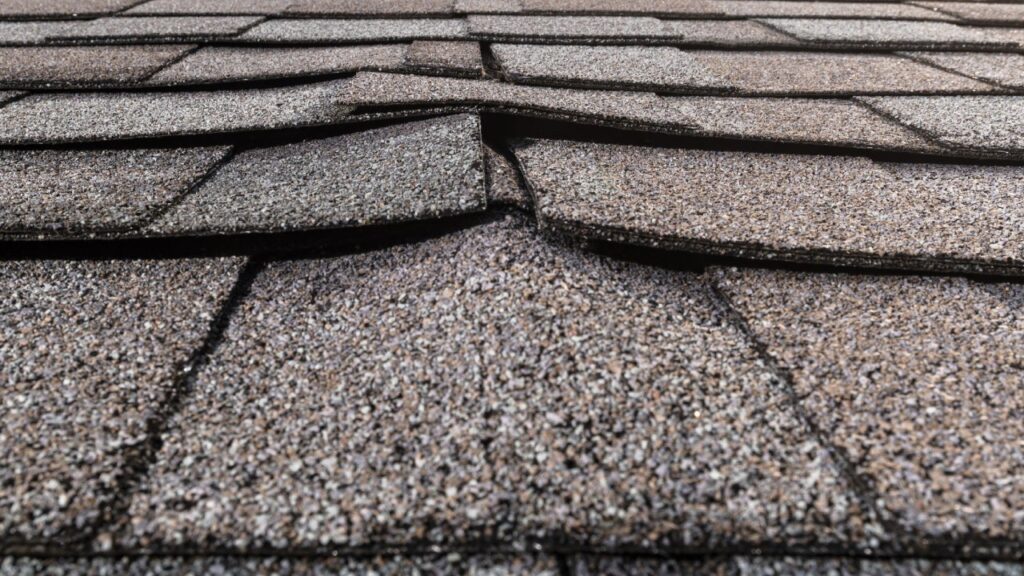Key takeaways
- The average life expectancy of the most common type of roof (asphalt shingle) is 15 to 18 years. (Klaus Larsen LLC)
- Many homeowners underestimate roof age. Inaccurate roof age costs home insurers $1.31 billion in lost premiums each year. (Verisk)
- Older roofs typically cause more home insurance claims. As such, your insurance company may only offer actual cash value coverage to insure an older roof.
Whether home insurance covers your roof will depend on two things: how old your roof is and the source of the damage. If your roof was damaged by something covered by your home insurance policy, an insurance company will likely help with the repairs or replacement. However, how that claim payout works will mainly depend on your roof’s age. Your home insurance company might only agree to cover an older roof for its actual cash value. This may mean a cheaper premium but generally offers less coverage. Or, if your roof is eligible, you could insure at its replacement cost value. This typically costs more but offers better financial protection.
How does roof insurance work?
Your home insurance policy is designed for sudden, accidental losses — not general repairs. Home insurance does not cover your roof if it needs maintenance. Your policy only helps with losses caused by a covered peril. There are two ways an insurance company can insure a roof: actual cash value or replacement cost value. Actual cash value (ACV) factors depreciation into your claim payout, while replacement cost value (RCV) does not. Because of this, ACV claim payouts are usually lower.
ACV vs. RCV roof claim
Say your 10-year-old roof is completely destroyed due to a covered policy peril like a fire, and you need a new roof. Here’s how home insurance covers roof replacement if your policy has actual cash value coverage:
$50,000 (cost of roof when you first got it) – $23,000 (depreciation) – $2,000 (deductible) = $25,000 claim payout
With replacement cost value, you’d likely receive more money from your insurance company:
$50,000 (cost of roof when you first got it) – $2,000 (deductible) = $48,000
If your roof is older, your insurance company may only agree to actual cash value coverage. Older roofs are often less resilient and could be more prone to claim-causing damage. To help mitigate expensive claims, a home insurance company may refuse to insure an older or worn-down roof at its replacement cost value.
Learn more: How to read a homeowners insurance policy
How is your roof covered by your home insurance policy?
Your roof is covered under the dwelling portion (called Coverage A) of your home insurance policy. With HO-3 and HO-5 policies — the two most common types of home insurance — your roof is covered on an open-perils basis. This means your roof is financially protected from all kinds of losses, except the ones that are specifically excluded from your policy. Exact exclusions could vary from company to company, but they generally include:
- Flood damage
- Earthquakes
- Maintenance
- Pests
- Regular wear and tear
- Neglect
- War
- Nuclear hazard
- Government action
- Intentional damage
In some hurricane-prone states, like Alabama, Florida, Louisiana, Mississippi, the Carolinas and Texas, wind may also be excluded from your policy. In that case, you’d need a separate wind insurance policy or endorsement to protect your roof.
Types of roof damage
Home insurance can cover a roof replacement but only if the damage is caused by a covered policy peril. There are two main types of roof damage when it comes to home insurance: damage from a covered loss or regular wear and tear. For example, if your roof has a leak or damage due to covered perils like hail, a snowstorm, a falling tree branch, wind or fire, the insurance company will usually step in to pay for the repair or replacement up to your coverage limits (assuming your policy has no exclusions regarding your roof).
However, if there is a leak that is not associated with a covered peril — say, it’s due to something like the failure of the structure, a lack of maintenance or the roof’s older age — insurance is unlikely to cover repair or replacement of the roof. Ongoing roof maintenance and upkeep are crucial to not only maintaining your roof but also to taking advantage of the financial protection offered by your homeowners insurance.
If you are unsure what your home insurance policy covers and does not cover, talk with your insurance agent so you aren’t caught unprepared.
What steps should homeowners take to protect their roofs?
Roofs are expected to hold up to weather conditions, but a well-maintained roof is typically more resilient against the elements. While you may not want to replace your whole roof regularly, ongoing maintenance could protect your roof and make sure it holds up better over time.
Here are some ways to protect your roof:
- Schedule a periodic inspection: If you’re unsure if your roof is holding up, or if you notice a leak or other indication that your roof may be suffering from damage, hire a roof inspector to determine if there are any structural issues. You can schedule an inspection every couple years and address minor problems before they become significant ones.
- Prune nearby trees: Trees are among the most common causes of damage to roofs. Falling branches and other debris can cause roof damage during a storm or heavy winds. Cutting back and pruning nearby tree branches could help minimize this type of damage.
- Keep gutters clean: Gutters are meant to carry water — what could be a roof’s biggest enemy — away from the rooftop. If your gutter is filled with leaves or debris, water could overflow onto the rooftop, weakening the structure or causing interior leaks.
I need a new roof. Now what?
A new roof is a significant investment. The average cost of replacing a roof is around $9,480. Start by searching for a reputable roofing company. Referrals from friends or family can be helpful, but it is always a good idea to confirm that the company is licensed, bonded and insured.
Besides choosing the right company, the type of material you choose can make a big difference in how long the roof will last. As mentioned, asphalt shingle roofs have an average life span of 20 years. Architectural Digest says there are 10 types of common roofing shingles available.
| Shingle material | Replacement cost | Life expectancy* |
|---|---|---|
| Copper | Up to $19,500 | Over 50 years |
| Slate | Up to $50,000 | Over 50 years |
| Concrete | Up to $24,000 | Over 50 years |
| Clay | Up to $50,000 | Over 50 years |
| Asphalt | Up to $15,785 | 20 years |
| Fiber cement shingles | Up to $16,500 | 25 years |
| Wood | Up to $15,645 | 30 years |
| *According to the National Association of Home Builders |
Additionally, solar shingles are available. While pricey, these are basically tiny solar panels that you can integrate throughout your roof alongside another shingle type to help save on energy bills.
Roof repair vs. roof replacement
When deciding whether to repair or replace your roof, you might want to consider the following options:
| Repair… | Replace… |
|---|---|
| If the damage is minor and localized | If the damage is widespread |
| If the roof is 10 years old or less | If the roof is older or you plan to sell your home in the near future |
| If non-matching new shingles do not affect the home’s curb appeal | If the cost of repair is close to the cost of a full replacement |
Frequently asked questions
Read the full article here
















